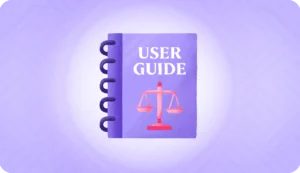The U.S. tax system is complex, with multiple levels of taxation and various types of taxes. Businesses need to keep track of federal, state, and local taxes. Depending on the nature of their business, the type of taxes may differ too.
Corporate tax in the USA amounted to $424.7 billion, which made up 1.7% of the GDP in 2022. This clearly indicates that businesses fuel a significant portion of the US economy. So it is no surprise that the US government is extremely careful about the collection of taxes.
Tax non-compliance can land your organization in a soup, with a penalty of up to $500,000, and/or jail time of up to 10 years. Suffice it to say that tax compliance is extremely crucial for any business in the U.S.
However, tax compliance doesn’t only mean non-payment of taxes. Tax avoidance, if not handled with legal expertise, can also be a cause for concern.
In this blog, we will understand the concepts of tax avoidance vs tax evasion, and explore the difference between these concepts.
Defining tax avoidance and tax evasion
Before we understand the difference between the two, let us first understand the concepts by themselves.
What is tax avoidance?
Tax avoidance is a legal strategy used by individuals and businesses to reduce their tax liability within the confines of the law. This often involves taking advantage of tax loopholes, deductions, or credits that are legally available.
Here are some common methods of tax avoidance:
- Deductions and credits: Claiming allowable deductions and credits to reduce taxable income.
- Tax-deferred accounts: Investing in retirement accounts like IRAs or 401(k)s to defer paying taxes on earnings until withdrawal.
- Tax-free investments: Investing in tax-free bonds or municipal securities.
- Business structures: Choosing a business structure (e.g., sole proprietorship, corporation) that offers tax advantages.
What is tax evasion?
Tax evasion is an illegal practice where individuals or businesses intentionally misrepresent their income or expenses to avoid paying taxes. It involves deliberately concealing income, falsifying records, or claiming fraudulent deductions.
Here are some common methods of tax evasion:
- Hiding income: Failing to report all income, such as cash payments or income from unreported side businesses.
- Falsifying records: Creating false or altered documents to overstate expenses or understate income.
- Claiming fraudulent deductions: Taking deductions for expenses that are not legitimate or that exceed the allowable limits.
- Offshore accounts: Using offshore accounts to hide income from tax authorities.
Key differences between tax avoidance and tax evasion
The key difference between the two is that while tax avoidance is legal, tax evasion is illegal. While ethically debatable, tax avoidance is generally considered acceptable within the bounds of the law. Tax evasion, on the other hand, involves intentionally misrepresenting income or expenses to avoid paying taxes. This can include hiding income, falsifying records, or claiming fraudulent deductions.
Legal and financial implications
Beyond the legality, there are further legal implications for each
Tax avoidance: While tax avoidance is generally considered legal, there are some circumstances where it may be challenged. For example:
- Substance over form doctrine: If a transaction is structured primarily to avoid taxes, rather than to achieve legitimate business purposes, the IRS may disregard the form and look to the substance of the transaction.
- Sham transactions: If a transaction lacks economic substance or is clearly contrived to avoid taxes, it may be deemed a sham and disregarded for tax purposes.
Note: Even though tax avoidance is legal, it may still have unintended consequences, such as damage to a company’s reputation or negative public perception.
Tax evasion: Tax evasion is a serious criminal offense. The penalties for tax evasion can be severe, including:
- Fines: Significant monetary penalties may be imposed.
- Imprisonment: Tax evaders can face jail time, the length of which depends on the severity of the offense.
- Interest and penalties: Tax evaders may be required to pay back the unpaid taxes, along with interest and penalties.
- Civil penalties: In addition to criminal penalties, the IRS may also impose civil penalties, such as a penalty equal to 75% of the underpayment of tax.
Moreover, tax evasion can have broader consequences, such as:
- Business closure: A business caught engaging in tax evasion may be forced to close.
- Loss of licenses or permits: A company or individual convicted of tax evasion may lose necessary licenses or permits to operate.
- Reputation damage: Tax evasion can severely damage a company’s or individual’s reputation.
The Role of Regulatory Bodies
The primary regulatory body for taxation in the United States is the Internal Revenue Service (IRS), a division of the U.S. Department of the Treasury. The IRS is responsible for:
- Enforcing tax laws: The IRS collects taxes, audits taxpayers, and investigates and prosecutes cases of tax evasion.
- Providing guidance: The IRS issues regulations, rulings, and other guidance to help taxpayers understand and comply with tax laws.
- Resolving disputes: The IRS operates an appeals process to resolve disputes between taxpayers and the IRS.
Other regulatory bodies involved in taxation at the federal level include:
- Department of the Treasury: The Treasury Department oversees the IRS and plays a role in formulating tax policy.
- Congress: Congress is responsible for enacting tax laws.
At the state and local level, there are also regulatory bodies that administer and enforce tax laws. These bodies may include:
- State tax departments
- Local tax assessors
- Board of Equalization (in some states)
These regulatory bodies may have different responsibilities, but they generally involve collecting taxes, auditing taxpayers, and providing guidance on tax laws.
IRS Guidelines on Tax Compliance
The Internal Revenue Service (IRS) provides extensive guidelines on tax compliance to help individuals and businesses understand their tax obligations and avoid penalties. These guidelines cover a wide range of topics, including:
Recordkeeping:
- Keep accurate records: Maintain detailed records of all income, expenses, deductions, and credits.
- Retain records for a certain period: The IRS generally requires records to be kept for at least three years, but some records may need to be kept for a longer period.
Filing requirements:
- Determine filing status: Determine your filing status based on your marital status and other factors.
- File on time: File your tax return by the due date, which is typically April 15.
- Use the correct forms: Use the appropriate tax forms for your filing status and income situation.
Payment requirements:
- Pay on time: Pay any taxes due by the due date.
- Avoid underpayment penalties: Estimate your tax liability and make estimated tax payments throughout the year to avoid underpayment penalties.
- Use electronic payment options: Consider using electronic payment options, such as direct debit or credit card, for convenience and to avoid late payment penalties.
Reporting income:
- Report all income: Report all income, including wages, salaries, tips, interest, dividends, and capital gains.
- Report foreign income: Report any foreign income you earn.
- Report self-employment income: Report income from self-employment or operating a business.
Claiming deductions and credits:
- Claim eligible deductions: Claim deductions for expenses that are allowed by law, such as charitable contributions, business expenses, and mortgage interest.
- Claim eligible credits: Claim credits that reduce your tax liability, such as the earned income credit or the child tax credit.
Understanding your rights:
- Know your rights: Understand your rights as a taxpayer, such as the right to appeal an IRS decision or to request an extension of time to file your tax return.
By following these guidelines, individuals and businesses can ensure that they are complying with tax laws and avoiding penalties.
Consequences of Non-Compliance
Non-compliance with IRS regulations can lead to a variety of serious consequences, including:
Financial Penalties:
- Late payment penalties: A penalty may be assessed for each month or part of a month that a tax return is filed late.
- Accuracy-related penalties: A penalty may be imposed if a tax return is inaccurate due to negligence, disregard of rules, or substantial understatement of tax.
- Underpayment penalties: A penalty may be assessed if you underpay your estimated taxes.
- Interest: Interest will accrue on any unpaid taxes.
Legal Actions:
- Audit: The IRS may conduct an audit to verify your tax return and determine if you owe additional taxes.
- Collection efforts: If you owe taxes and fail to pay, the IRS may take steps to collect the debt, including garnishing your wages or seizing your assets.
- Criminal prosecution: In cases of willful tax evasion or other serious offenses, the IRS may refer the case to the Department of Justice for criminal prosecution.
Reputation Damage:
- Negative publicity: Non-compliance with IRS regulations can damage your reputation and the reputation of your business.
- Loss of trust: Your business partners, customers, and employees may lose trust in you if you have a history of non-compliance.
Additional Consequences:
- Loss of privileges: The IRS may revoke certain privileges, such as the ability to obtain a passport or participate in government programs.
- Business closure: In severe cases, non-compliance can lead to the closure of a business.
Strategies for Legal Tax Avoidance
Tax avoidance is a completely legal affair. It involves planning to optimize your taxable income, and legally save money on the overall liability.
Deductions and Credits
- Charitable contributions: Donating to qualified charities can reduce your taxable income.
- Business expenses: Deduct expenses related to your business, such as rent, utilities, and supplies.
- Retirement contributions: Contributing to retirement plans like 401(k)s or IRAs can reduce your taxable income.
- Education expenses: Deductions may be available for tuition, student loan interest, and other education-related expenses.
Tax-Advantaged Investments
- Tax-deferred accounts: Investing in traditional IRAs or 401(k)s allows you to defer paying taxes on earnings until you withdraw the funds.
- Roth accounts: Contributing to Roth IRAs or Roth 401(k)s allows you to withdraw funds tax-free in retirement.
- Municipal bonds: Investing in municipal bonds can offer tax-free interest income.
Business Structures
- S corporation: This entity allows pass-through taxation, meaning profits and losses flow through to the owners’ tax returns.
- Limited liability company (LLC): LLCs can offer flexibility in terms of taxation and liability.
Timing Strategies
- Deferring income: Delaying the recognition of income can push taxable income into a lower tax bracket.
- Accelerating deductions: Claiming deductions in the current year can reduce your taxable income for that year.
Tax Planning
- Consulting with a tax professional: A tax advisor can help you identify and implement strategies to minimize your tax liability.
- Staying informed: Keep up-to-date on tax laws and regulations to ensure you’re taking advantage of available opportunities.
Remember that aggressive tax avoidance strategies may raise red flags with the IRS, potentially leading to audits or penalties.
How to combat tax avoidance and evasion
Financial institutions and businesses play a crucial role in combating tax avoidance and evasion. Here are some strategies they can implement:
Enhanced Due Diligence:
- Customer identification: Conduct thorough due diligence to verify the identity of customers and understand their business activities.
- Beneficial ownership: Identify the ultimate beneficial owners of accounts to prevent individuals from hiding their involvement in transactions.
- Risk assessment: Continuously assess the risk of money laundering and tax evasion associated with customer relationships.
Reporting Requirements:
- Suspicious Activity Reports (SARs): File SARs with the relevant authorities when suspicious activity is detected, such as large cash transactions or unusual patterns of activity.
- Country-by-Country Reporting (CbCR): Report information about the global income and taxes paid by multinational corporations to tax authorities.
- Common Reporting Standard (CRS): Exchange information with other jurisdictions to identify individuals and entities that may be evading taxes.
Technology and Data Analytics:
- Advanced analytics: Utilize data analytics tools to identify patterns of suspicious activity and potential tax evasion schemes.
- Artificial intelligence: Employ AI-powered systems to automate due diligence processes and detect anomalies in transaction data.
Internal Controls:
- Policies and procedures: Develop and implement robust policies and procedures to prevent and detect tax evasion.
- Training and education: Provide training to staff on tax evasion risks, red flags, and reporting requirements.
- Independent audits: Conduct regular independent audits to assess the effectiveness of anti-money laundering and tax evasion controls.
Cooperation with Authorities:
- Information sharing: Collaborate with tax authorities and law enforcement agencies to exchange information and intelligence.
- Joint investigations: Participate in joint investigations to dismantle tax evasion networks.
Ethical Conduct:
- Culture of compliance: Foster a culture of compliance within the institution, emphasizing the importance of ethical behavior and adherence to regulations.
- Whistleblower protection: Implement policies to protect whistleblowers who report suspicious activity or violations of laws and regulations.
By implementing these strategies, financial institutions can play a vital role in preventing and detecting tax avoidance and evasion, contributing to a more equitable and transparent global tax system.
Takeaways
Tax avoidance is a legal strategy used by many businesses and individuals, but can be still problematic if not handled properly. Tax evasion, however, is a completely illegal practice that constitutes fraud and needs to be carefully monitored and avoided.
Financial institutions need to be extremely careful with their compliance to ensure that there are no lapses in their processes. A good solution like HyperVerge helps you conduct due diligence, and monitoring can go a long way in ensuring compliance.
HyperVerge allows you to reduce fraud at every customer touchpoint and helps you comply in over 195 countries. Get in touch with us to know more.
FAQs
Which is worse tax evasion or tax avoidance?
Tax evasion is far worse than tax avoidance and tax evasion is an illegal and unethical practice. Tax evasion can lead to penalties, fines, and imprisonment. Tax avoidance is a legal process that allows people to take advantage of loopholes to minimize their tax liability.
What is the primary difference between tax evasion and tax avoidance?
The primary difference between tax evasion and tax avoidance is their legality. Tax evasion is illegal, whereas tax avoidance is legal.
Is tax avoidance not legal?
Tax avoidance is completely legal in the United States. However, it needs to be handled with legal precision, as certain instances of tax avoidance can lead to scrutiny or even penalties from the IRS.
What are examples of tax evasion?
Some examples of tax evasion are:
- Offshore accounts
- Hiding income, and
- Falsifying records.





















